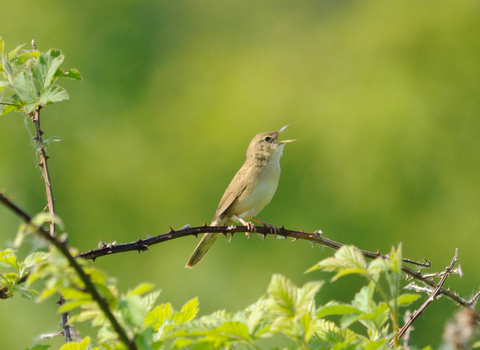
Amy Lewis
Grasshopper warbler
This small summer migrant travels from Africa to breed in the reedbeds of the UK. Rarely seen but given away by its insect like trilling call; the movement of the head during calling makes it tricky to pinpoint the exact location of singing perch.
Scientific name
Locustella naeviaWhen to see
April-AugustSpecies information
Category
Statistics
Length: 2.5-13.5cmWingspan: 15-19cm
Classified in the UK as Red under the Birds of Conservation Concern 5: the Red List for Birds (2021). Protected in the UK under the Wildlife and Countryside Act, 1981.
About
The grasshopper warbler is named for its reeling song, which is a long, continues sound that resembles an incredibly loud grasshopper. This small migrant nests in scrub and reedbed and feeds on insects. The grasshopper warbler has declined hugely in recent decades giving it Red List species designation. The decline is due to loss of habitat in both its summer and winter ranges.How to identify
A rather non-descript brown/buff plumage make the grasshopper warbler difficult to visually recognise. Instead it is usually identified by its high-pitched call.Distribution
Scattered across the UK but less common in Scotland.Did you know?
As we get older the first part of the hearing to deteriorate is the exact pitch the grasshopper warbler sings at! Sad to think most of us will stop hearing them at some stage in our lives.Watch
Grasshopper Warbler (https://vimeo.com/444889957)
Grasshopper Warbler by John Bridges
